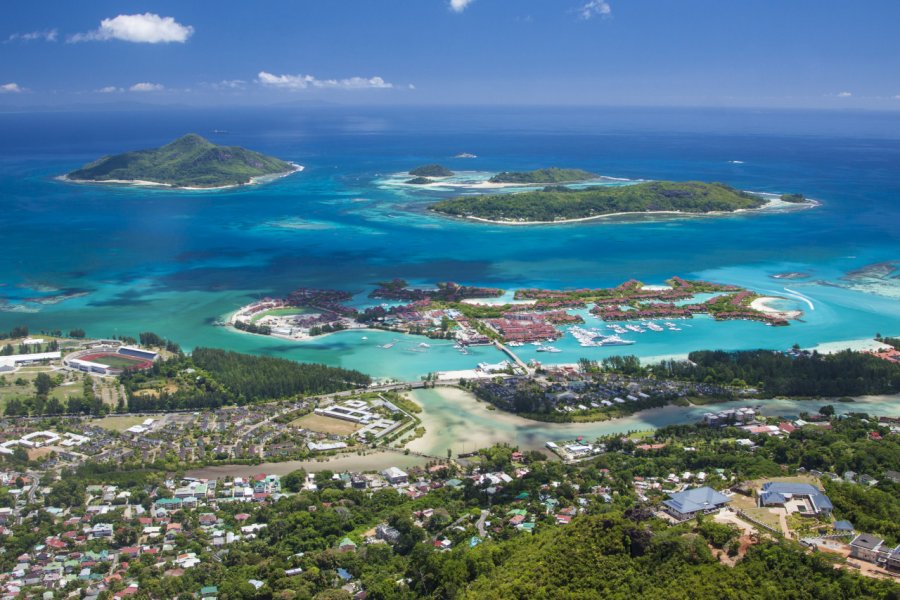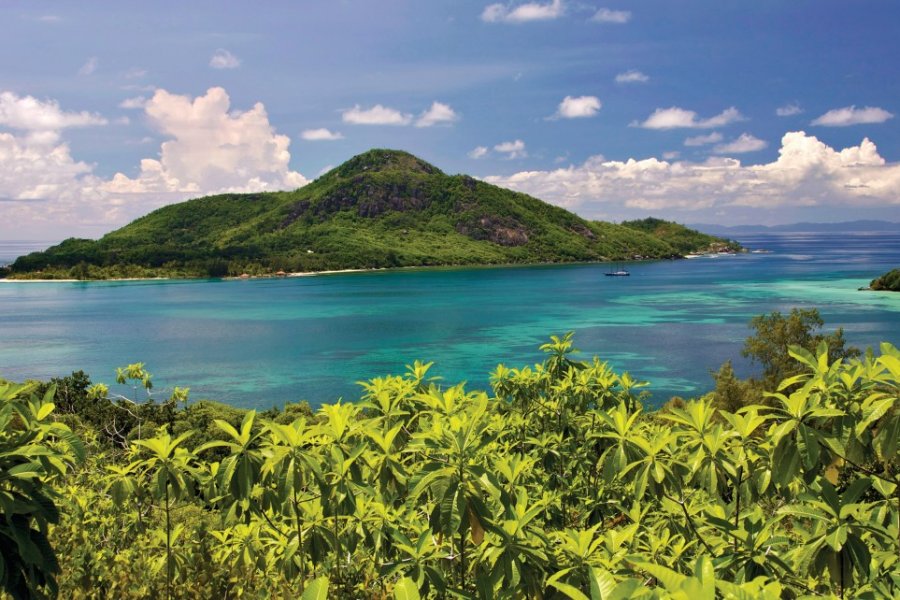Travel Guide Sainte-Anne
Find an accommodation
Advertising
"Smiling Sainte-Anne... our eyes rest pleasantly on its coconut and banana trees, their green foliage in delicately varied shades, which decorate pretty little coves of white sand protected from the sea by rocks The French frigate captain Cyrille Laplace was certainly seduced by this island where he had just dropped anchor on May 14, 1830. The future admiral, who was sailing around the world on the orders of the Minister of the Navy, had been asked to confirm the geographical position of the Séchelles Islands, as the maps of the time were often imprecise. Named by the French navigator Nicolas Morphey on Saint Anne's Day 1756, the island offered a reassuring anchorage, away from the reefs and mangroves of the worrying Mahé. Laplace used Sainte-Anne as a base camp, taking observations with a theodolite from the conical summit of the island, then owned by Charles Savy, whose large plantation was alive with music every evening. The French officers found their female guests delightful, and if, as Laplace remarked, "their dancing was not as good as in Europe, their desire and lack of pretension made me close my eyes to all other points of comparison that did not work in their favor." Savy's home and plantation were located on the west coast plateau, the same area that had attracted the first French settlers. On August 27, 1770, the ships Duc de Praslin, Comte Saint-Florentin and Télémaque disembarked the first inhabitants of the Seychelles Islands. The first agricultural successes (manioc, rice, corn, coffee, vegetables...) of this colony led other settlers to extend this establishment to Mahé. Sainte-Anne the pioneer. "Certainly the best place in these islands for a settlement", remarked the captain of an English ship who visited the Seychelles to see what the French were doing there. He noted that the French commander Delaunay grew corn, rice, tobacco, coffee, cotton and vegetables. It was a former soldier of the French East India Company, Pierre Hangard, who then took over this prosperous island, where he quickly became rich by selling land tortoises and other marine life to ships visiting the islands. An illicit traffic that irritated the commander of Mahé, Gillot: "As long as the island of Sainte-Anne remains under the control of this man [...], it will be used for secret transactions with all ships. [...] Hangard and Ouinet will see them discreetly before they have anchored, to spread all sorts of slander about me." An agricultural island in its early days, Sainte-Anne also quickly became a strategic island, controlling the entrance to the main port of Mahé. During the Napoleonic Wars, lookouts on the top of the island sounded the alarm when they saw enemy ships, and on two occasions, the lookouts were in the forefront of a battle between a French and an English ship in the inlet between Sainte-Anne and Mahé. In the first decades of the 19th century, the island also offered a protective anchorage to American and English whalers who were hunting sperm whales, Charles Savy having denounced the excesses of certain crews. Two English whalers raided his house and ransacked it, terrifying the women and beating some of the slaves. Whaling activity around the Seychelles disappeared around 1870, but it had a short-lived revival in 1914, when the half-Scottish, half-South African company Saint-Ebba established a whaling station on the island. Operating with three ships, mainly off Denis Island and Bird Island, the company killed one hundred and twenty-two sperm whales and one right whale, producing nearly two thousand barrels of oil in just one year. But the sinking of the ship in October 1915 put an end to this activity, and the company was placed in liquidation shortly afterwards. With the Second World War, Sainte-Anne saw a new page in its fertile history. Used by the British Navy to supply ships with fuel, and by the Royal Air Force for its Catalina squadrons (called flying boats because they could land on the water), the Seychelles then made this island a place for storing this precious fuel. In 1942, a detachment of the RAF installed cannons on the heights of the island to protect the entrance to the harbor. These cannons would have prevented a bomber from getting close enough to destroy the Cable & Wireless installations in Victoria. After the war, the island retained its role as a fuel depot, since the Seychelles Petroleum Company stored its oil there for a long time in tanks which, not so long ago, broke the beautiful image of this island when one flew over it on the road to Praslin.
Suggested addresses Sainte-Anne
Weather at the moment
Advertising
Organize your trip with our partners Sainte-Anne
Transportation
Book your plane tickets
Car Rental
Boat rental
Accommodation & stays
Find a hotel
Holiday rental
Find your campsite
Tailor-made trip
Immersion travel
Services / On site
Activities & visits
Find a doctor
Sainte-Anne travel inspiration
Find unique Stay Offers with our Partners
Pictures and images Sainte-Anne
Other destinations nearby Sainte-Anne
5 km away
25 km away







